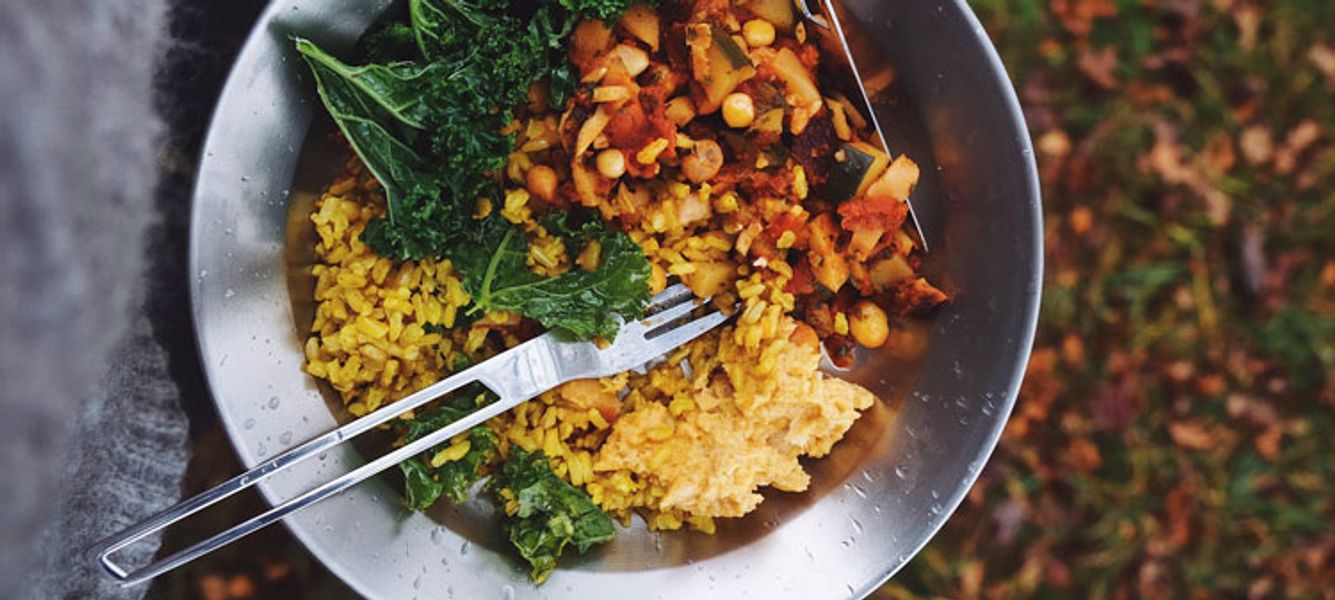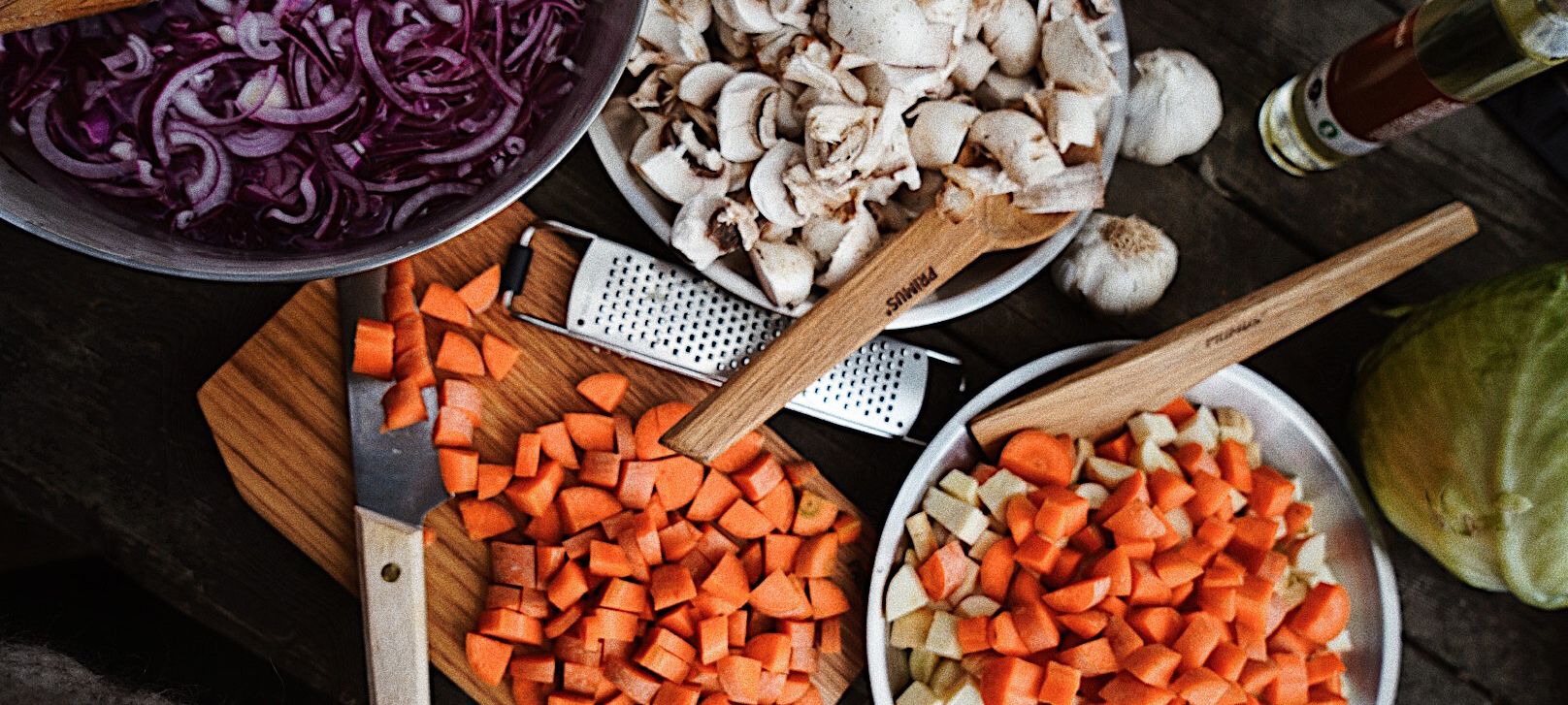

Therese Elgquist
Vegan outdoor cooking
Good and convenient food on the go that doesn't require refrigeration, takes up little space in your backpack and gives you enough energy for short and long trips and also camping adventures. Discover the benefits of vegan cooking!Smart food for your adventure
Cooking outdoors can be done in many ways: Maybe you're going on a picnic and want to prepare everything at home to enjoy the outdoors without any fuss, or you rather like to cook a whole meal in open nature.
Wraps, stuffed pancakes or sandwiches are great examples of smart food that you can prepare at home and bring with you on your adventure. However, if you're going on a longer hike where you have to carry all your gear and don't have access to refrigeration, there are various tricks you can use.
Dried food is generally good for several reasons: To reduce weight, avoid having to think about refrigeration and, last but not least, as a way for you to monitor that you are getting enough energy.
You can dry both fruit and vegetables yourself – just slice them thinly and place them on an oven tray. Now warm them up in the oven at 50°C until they are completely dry. Root vegetables and cabbage need to be pre-soaked for about 4 minutes before drying. Once you have dried your vegetables, you can also pack them in portions for even more convenient outdoor cooking.
Tip: Before cooking outdoors, the dried ingredients need to be soaked in water for about 20 minutes. Legumes, lentils, and beans are convenient dried ingredients as they take up much less space before cooking.
Another aspect of smart food for hiking (but also camping) is the cold storage of goods. In the winter, when temperatures are chilly, your backpack can act as a natural fridge. However, some foods may require refrigeration to be preserved in the summer when it's hot. Vegetarian and animal protein sources are examples of things that can go bad in hot temperatures. However, vegan protein sources such as legumes, grains, and nuts will do just fine!
Good to know: Vegetables such as tomatoes, cucumbers, potatoes, and onions do not depend on refrigeration. If the weight of your pack isn't critical, pre-cooked ingredients such as chickpeas and white beans are smart for outdoor cooking, as they only require a little seasoning in the form of herbs or a spice mix. Create your own spice mixes, or buy ready-made ones from shops.
Sauces are an essential part of my cooking. Speaking of which, there’s a clever trick for all outdoor cooking fans – whether vegan or not – when it comes to sauces. The secret is peanut butter. Sauces based on peanut butter are great because they don't require any refrigeration. All you need is a couple of tablespoons of peanut butter, and some water to mix it until you get a sauce of the desired consistency. Finish with salt – and add garlic, chilli powder or ginger if you like.
Give energy to your body
Carbohydrates are needed to quickly refuel your energy levels when you're out hiking, setting up a tent or preparing dinner on your kitchen stove. Dried fruit, rice cakes or dark chocolate, preferably along with some nuts or seeds for healthy fats, are good ideas.
Perfect for recovery are slow carbs. A meal of this kind could be a legume stew served with oat rice or quinoa or a stir fry with rice, chickpeas, and vegetables. Both legumes and grains are great ingredients because they support regeneration twice: They contain both slow carbohydrates and protein – perfect for a meal after a long day of hiking.
February 07 2022






